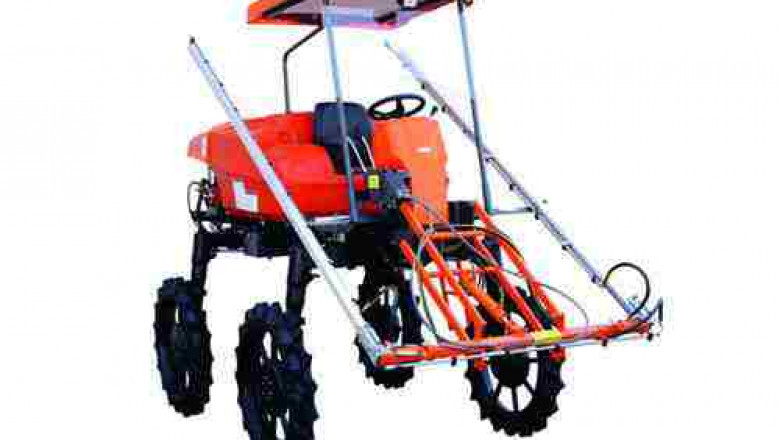views

Sprayer | Agriculture Sprayer Machine in India- Khetigaadi
The Sprayer is an agricultural plant protection equipment. It is important equipment in agriculture operations.
With the advancement of agricultural science, the maximum fields remain covered under crops for a longer duration of time, because farmers take multiple crops continuously without any break to make more money.
Agriculture sector is developing and the varieties of crops and technologies are used in farming. Due to better irrigation facilities to the crop and multiple cropping, consequently there is an increase in plant diseases and pests.
So, it has become necessary to know how to use pesticides and fungicides for controlling the pests and diseases on plants or crops. The liquid fertilizers are applied on plants in the form of spray and dust. So, we required the sprayer for the spraying operation. There are many types of sprayers available in different sizes for plant protection work.
Simply we can say that a sprayer is a machine used to apply fluids or liquid in the form of small droplets to the crop or plant.
Sprayer is used for the many purposes are as follows:
-
To apply herbicides to the plan to control weeds or to remove weeds.
-
Applying fungicides to control or minimize fungus diseases.
-
Apply insecticides to save crops from insect pests.
-
Application of micronutrients on the plants.
Functions of the sprayer are given below:
-
To make liquid into the effective size of droplets.
-
Distributing liquid droplets uniformly over the plants.
-
To check the amount of the liquid to avoid excessive application.
How to recognize the quality of sprayer:
The sprayer should produce a steady stream of spray materials, meaning liquid form of fertilizers, pesticides, or fungicides in the desired fineness of the particles, so that the plants to be treated may be covered uniformly.
It should deliver the liquid at sufficient pressure so that it reaches all the foliage and spreads totally over the sprayed surface.
It should be light to operate sufficiently strong, easily workable and repairable.
Basics components of the sprayer are as follows:
1. Nozzle body 2. Nozzle boss
3. Swirl plate 4. Filter
5. Overflow pipe 6. Relief valve
7. Pressure regulator 8. Cut-off valve
9. Spray boom 10. Drop legs
11. Nozzle disc 12. Nozzle cap
13. Nozzle tip 14. Spray lance
15. Spray gun
Type of spray: High volume spray, Low volume spray, and Ultra low volume
-
High volume spray: In this spray the more than 400 liters spray/ha liquid has been sprayed. Hydraulic machines are used to apply dilute liquids. It consumes more time and labors also.
-
Low volume spray: In this type 5 to 400 liters, per hectare fluids has been sprayed. It uses an air stream from a fan as a pesticide carrier with small quantities of liquid. There is storing of material and labor.
-
Ulta-low volume spray: In ULV the liquid less than 5 liters/ spray/ ha sprayed. ULV spraying can be defined as a plant protection operation in which total volume of liquid applied amounts to a few milliliters per acre, it is mainly used in aircraft spraying.
Types of the sprayers:
Sprayers are of three types are as follows:
-
Manually operated
-
Engine operated
-
Airplane sprayers
Manually operated sprayers are classified as:
-
Hand atomiser
-
Stirrup pump type
-
Knapsack type
-
Bucket type
-
Hand compression sprayer
-
Racker sprayer and
-
Foot sprayer
Engine operated sprayer are classified as:
-
Knapsack mist sprayer duster and
-
Power sprayer
Airplane sprayers are used for large size areas of fields only.
Sprayers at Khetigaadi:
-
Beri Sprayer FKTMS- 550
-
Fieldking Sprayer FKTMS- 1100
-
Landforce Sprayer DMS-400/600
-
Mahindra Sprayer Boom Sprayer
Khetigaadi provides you all detailed information about sprayer, popular models of sprayers, sprayers uses, benefits in agriculture industry.
So, if you want to buy a sprayer then khetigaadi is the perfect platform for you.
FAQ About Sprayer:
Question: Which is the popular sprayer in India?
Answer: Neptune PBS-13 PLUS.
Question: What are the types of sprayers?
Answer: High volume spray, Low volume spray, and Ultra-low volume.












